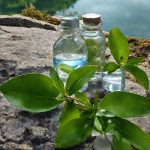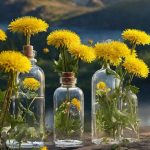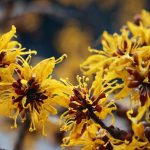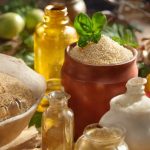Eating Right: Not Just for the Waistline
Reaching the age of 50 is a milestone. Just as we care for our skin and hair, it’s essential to pay attention to our nails. Fingernail health, especially for women over 50, can be compromised by water mold. But with the right nutrition, we can fortify our nails against it.
It’s All About Balance
Our nails reflect our overall health. From being pale or yellowish to showing white spots, they can indicate various conditions. And when it comes to water mold, nutrition can play a pivotal role in prevention.
As hormonal changes make nails more susceptible to infections in our 50s, a balanced diet emerges as a primary defense mechanism.
Bring on the Biotin
Biotin, commonly known as Vitamin H, has been observed to strengthen nails and reduce their susceptibility to issues, including water mold.
Foods rich in biotin include:
- Eggs (especially the yolk)
- Bananas
- Cauliflower
- Salmon
Zinc It Up
Zinc is vital for nail health. It not only helps in reducing white spots but can also prevent mold growth.
Good sources of zinc:
- Pumpkin seeds
- Chickpeas
- Cashews
- Dairy products
Omega-3s: A Nail’s Ally
Omega-3 fatty acids are known to combat inflammation, potentially reducing the risk of mold in fingernails.
Rich sources of Omega-3:
- Flaxseeds
- Walnuts
- Mackerel and other fatty fish
Power of Protein
Our nails primarily consist of a protein called keratin. Supplying them with adequate protein can enhance their strength.
Consider these protein-rich foods:
- Lean meats like chicken and turkey
- Lentils and beans
- Tofu
- Quinoa
Hydration is Key
While we often associate hydration with skin health, it’s equally crucial for nails. Well-hydrated nails are resilient against breakage, splitting, and infections. Strive for 8 glasses of water daily.
Limit These for Better Nail Health
Some food items can adversely impact nail health:
- High caffeine intake can dehydrate nails.
- Excess salt might inhibit the absorption of essential nutrients.
Nutrition to help reduce fingernail water mold :
| Nutrient | Source | Daily Recommended Intake |
|---|---|---|
| Biotin | Eggs, almonds, sweet potato, spinach, broccoli | 30 mcg |
| Vitamin C | Citrus fruits, strawberries, kiwi, bell peppers, broccoli | 75-90 mg |
| Vitamin E | Almonds, sunflower seeds, avocado, spinach, sweet potato | 15 mg |
| Iron | Red meat, poultry, fish, beans, lentils | 8-18 mg |
| Zinc | Oysters, beef, crab, pork, chickpeas | 8-11 mg |
| Omega-3 Fatty Acids | Fatty fish (salmon, tuna, mackerel), flaxseeds, chia seeds, walnuts | 250-500 mg |
| Protein | Lean meats, poultry, fish, beans, lentils | 46-56 g |
| Magnesium | Spinach, almonds, cashews, peanuts, black beans | 320-420 mg |
| Calcium | Dairy products, leafy greens, fortified plant-based milk, tofu | 1000-1200 mg |
| Water | Tap water, bottled water, fruits, vegetables | 2-3 liters |
Sources:
Healthline – Top 8 Vitamins and Nutrients for Healthy, Strong Nails
Freeland Foot & Ankle Clinic – 10 Foods You Should Eat If You Want Strong, Healthy Nails
Seeking Expert Advice
While nutrition is significant, if you notice persistent water mold on your nails, consulting a dermatologist is essential. Sometimes, a professional touch is what our nails need.
Cherish Your Nails, Inside and Out
Every woman, regardless of age, should enjoy the confidence that comes with healthy nails. With optimal nutrition, our nails can reflect our inner health and vitality. Here’s to radiant nails at 50 and beyond!





Leave a Reply